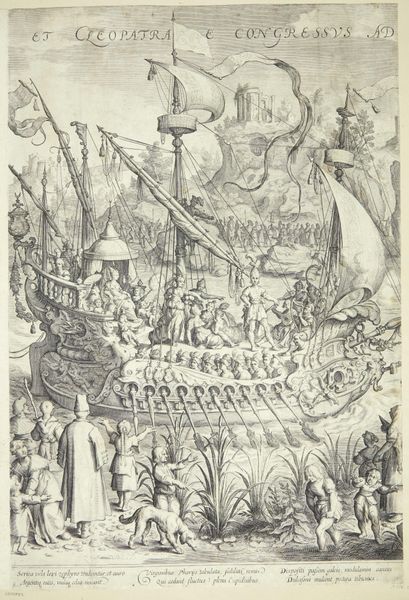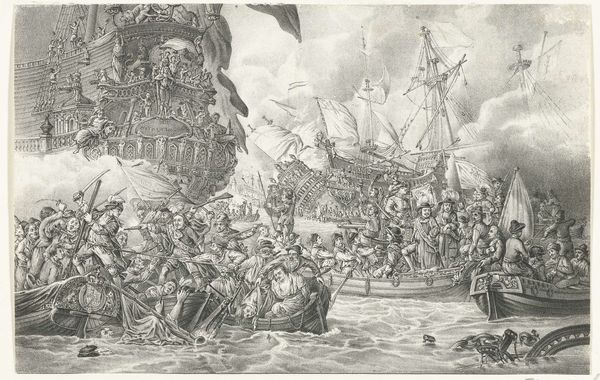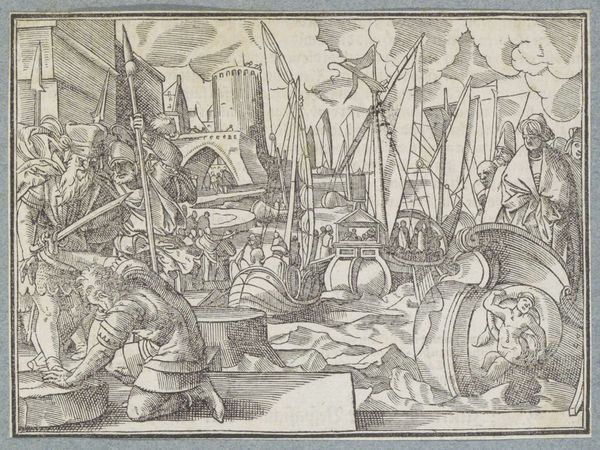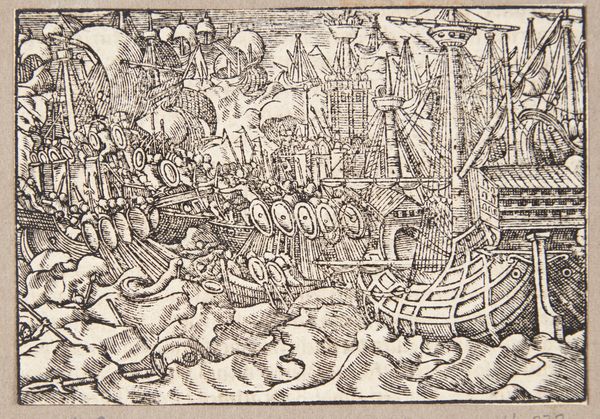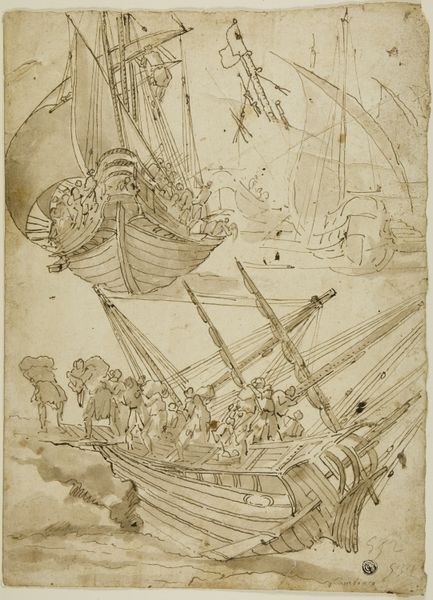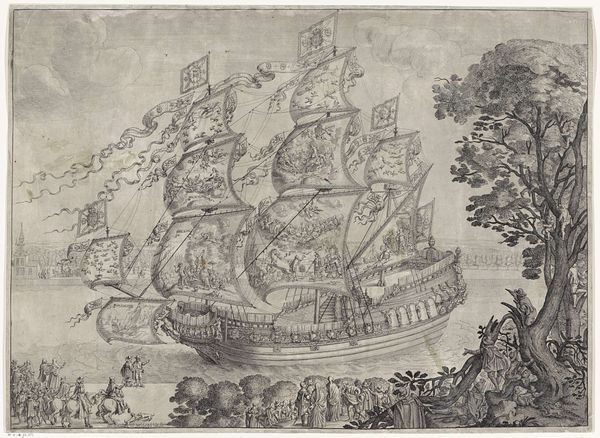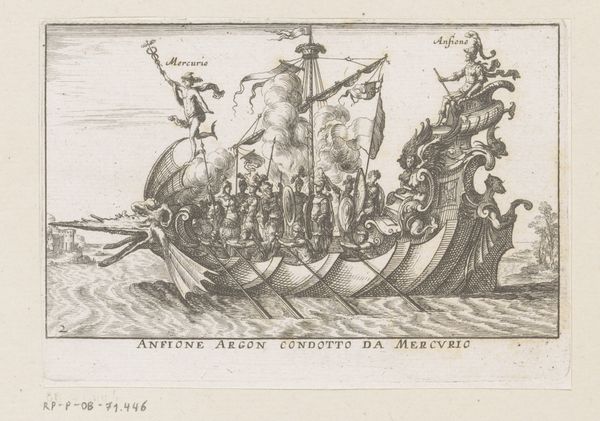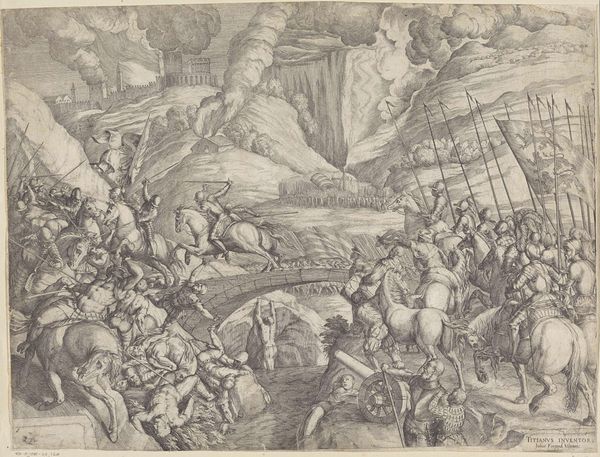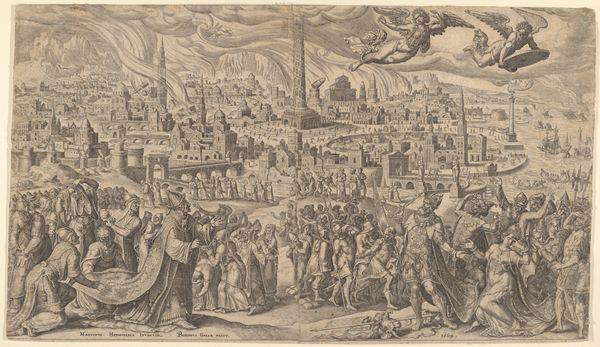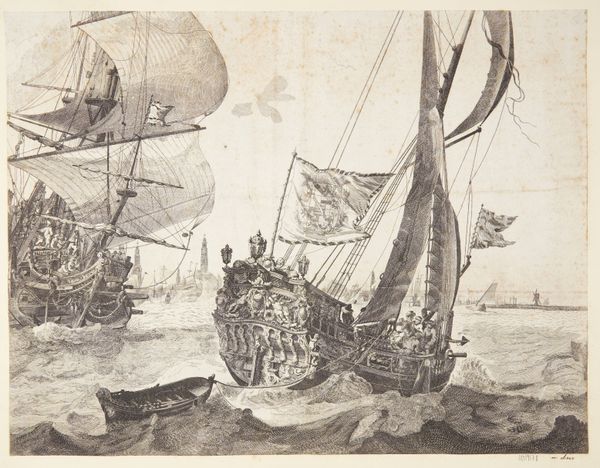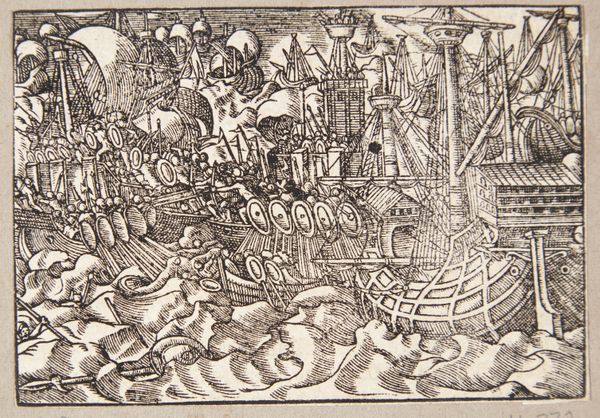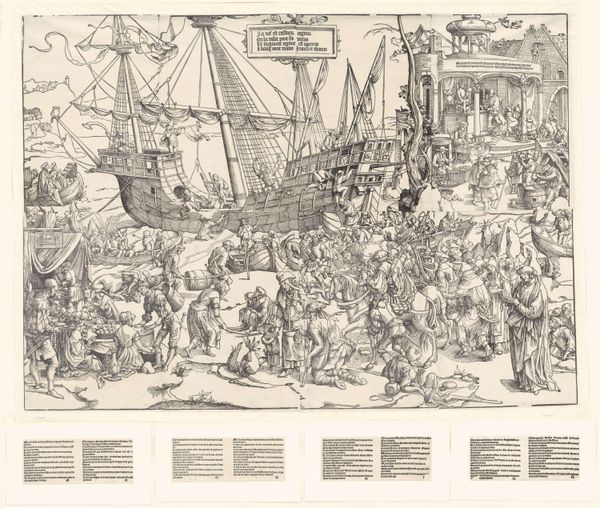
drawing, print, paper, ink, pencil, pen
#
drawing
#
weapon
#
narrative-art
#
ink painting
#
ship
# print
#
landscape
#
figuration
#
paper
#
ink
#
geometric
#
pencil
#
pen
#
history-painting
#
italian-renaissance
Dimensions: sheet: 12 x 16 15/16 in. (30.5 x 43 cm)
Copyright: Public Domain
Editor: This is "The Sea Battle in the Gulf of Morbihan," a drawing by Taddeo Zuccaro from the late 16th century. It's done with pen, ink, and pencil on paper. The reddish-brown ink gives the scene a somewhat dreamlike, ancient feel. What strikes you most about this piece? Curator: The drawing immediately evokes a sense of dramatic intensity and a struggle for dominance. Notice how the ships, rendered with incredible detail, are practically overflowing with figures locked in combat. The intertwined bodies and weaponry form a complex, almost chaotic visual field. Do you get the sense that Zuccaro is deliberately crafting an allegory here? Editor: An allegory? I was mostly caught up in the action itself. What kind of symbolism might be at play? Curator: Consider the historical context. This was a period of immense naval conflict, religious strife and burgeoning empires. Sea battles, in particular, become potent symbols of power, faith, and even the struggle between civilization and chaos. Look at the intricate ornamentation of the ships – are these generic warships, or are they deliberately imbued with iconographic programs referencing specific powers or ideologies? Think about Neptune, gods of the Sea - classical iconographies. What is being brought back? Editor: So, it's not just about depicting a historical event, but also about communicating deeper ideas about power and the clash of cultures? I never thought about that... I see so much fighting. Curator: Exactly. The drawing, with its almost obsessive level of detail, becomes a repository of cultural memory. Every element, from the figureheads on the ships to the way the combatants are posed, contributes to this layered narrative. We’re invited to decode, not just observe. Does that resonate with you? Editor: Absolutely. It shifts my perspective entirely. I’m now viewing it less as a simple depiction of war, and more as a dense tapestry of symbols reflecting the anxieties and ambitions of the Renaissance period. Thank you. Curator: My pleasure. It’s always rewarding to unlock the hidden languages within these images, revealing the enduring power of symbols.
Comments
No comments
Be the first to comment and join the conversation on the ultimate creative platform.
